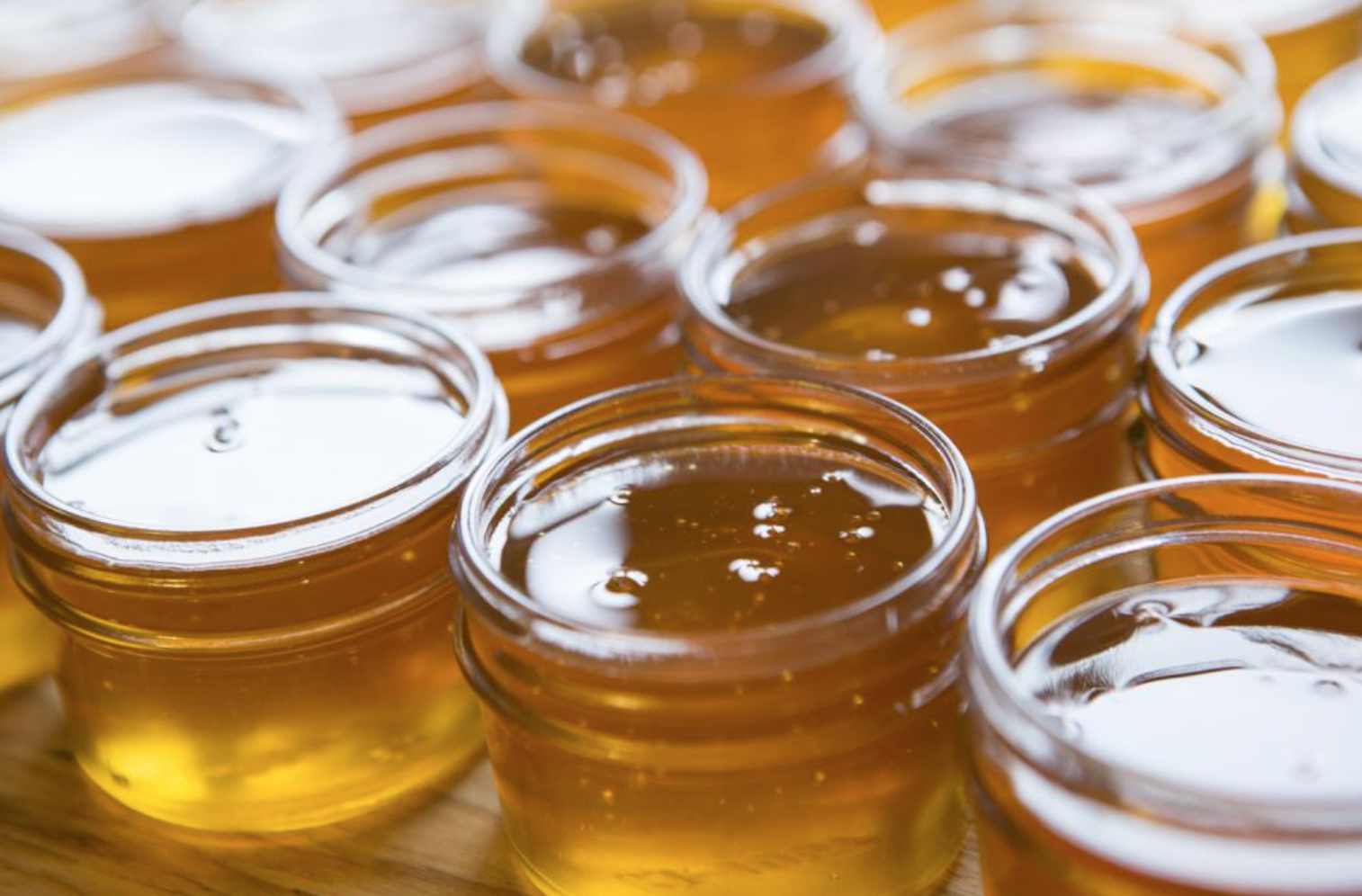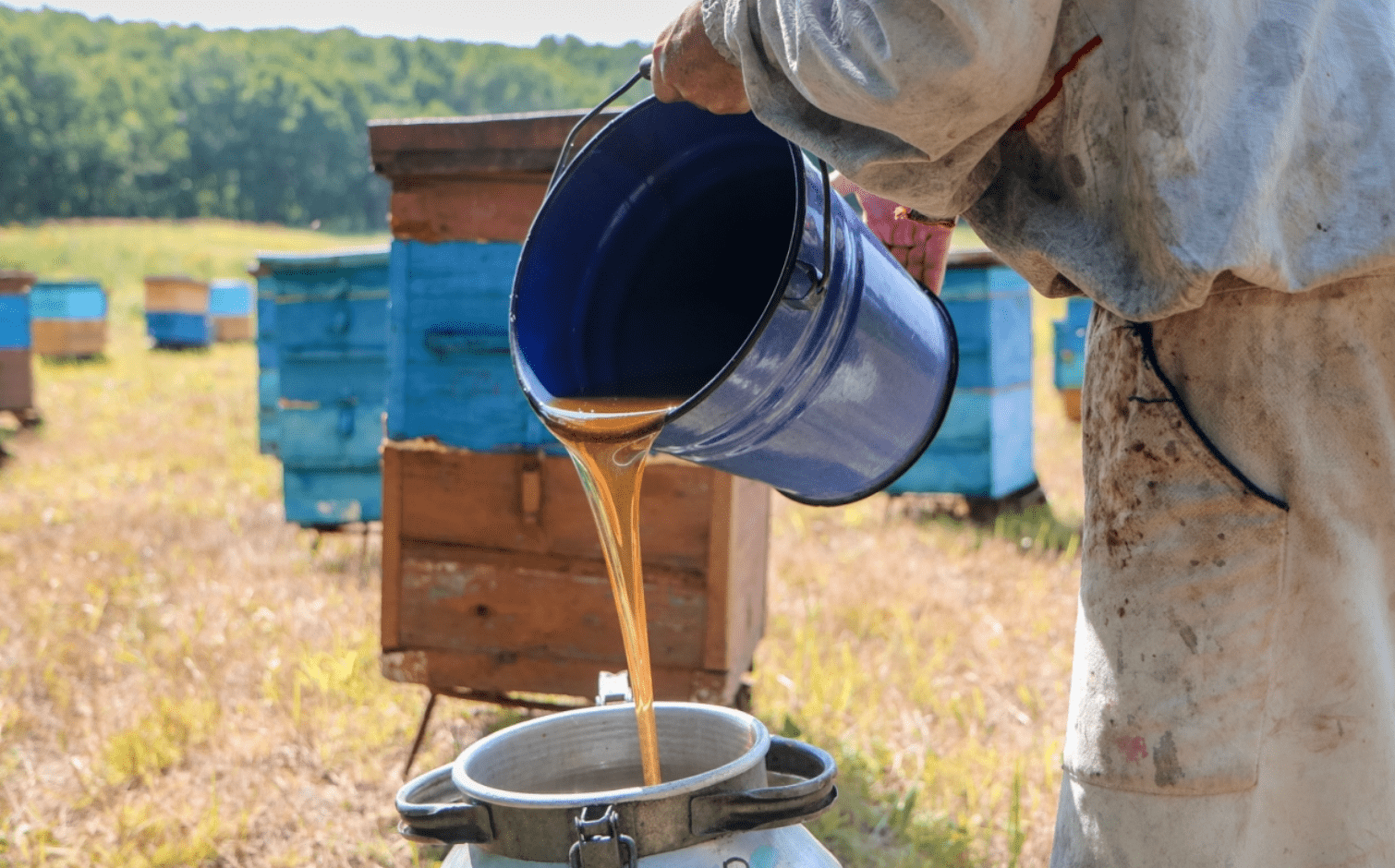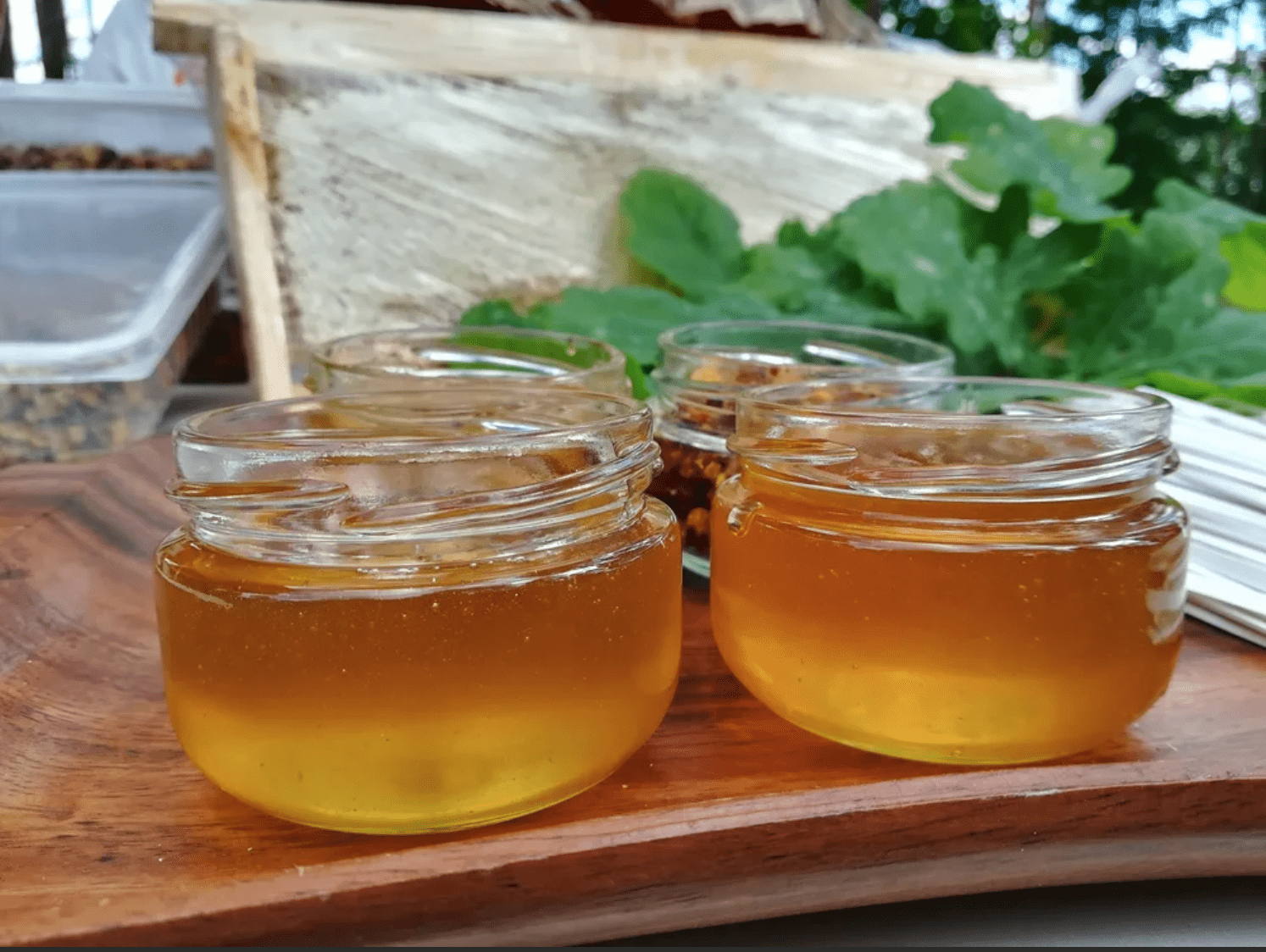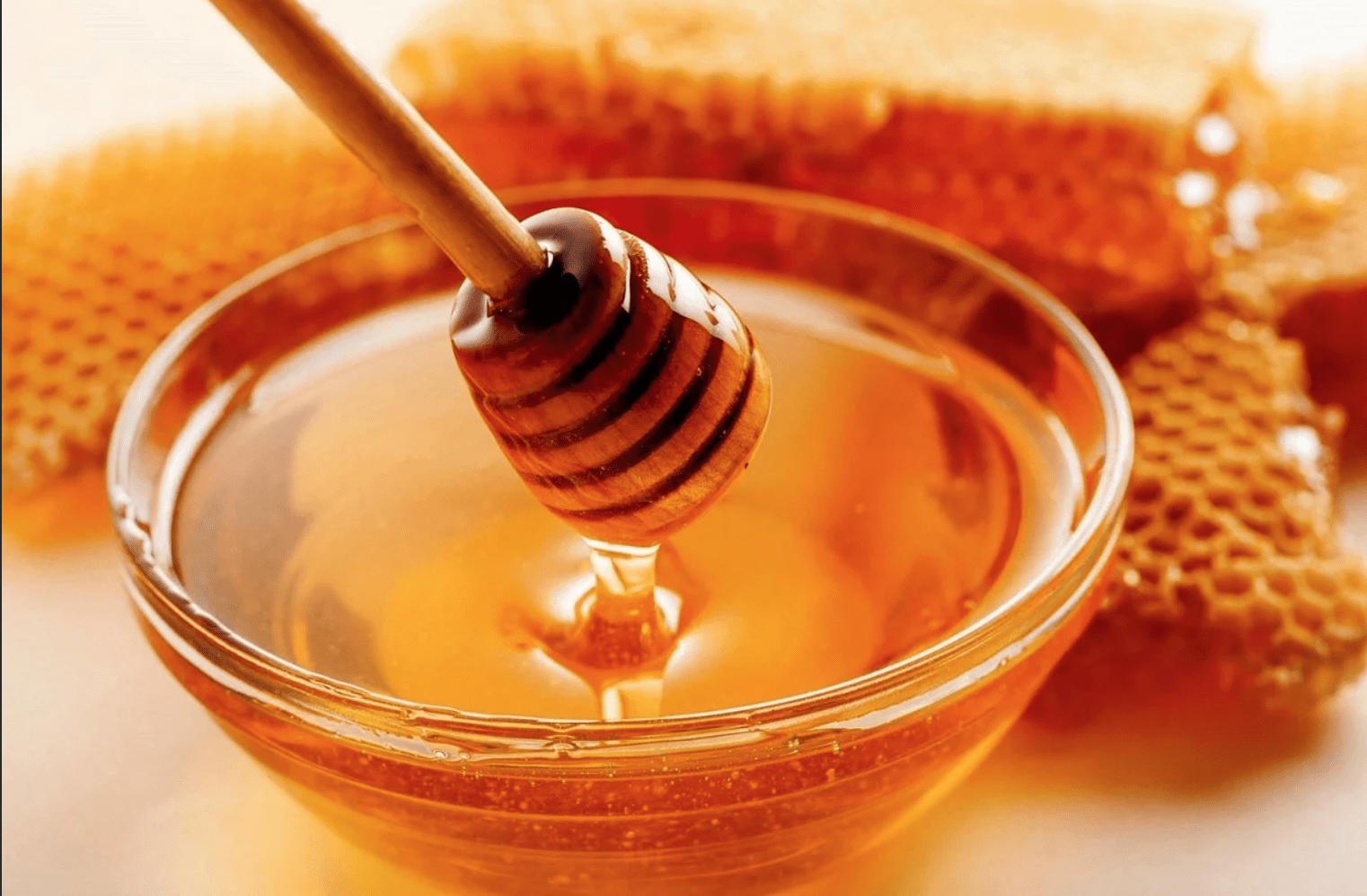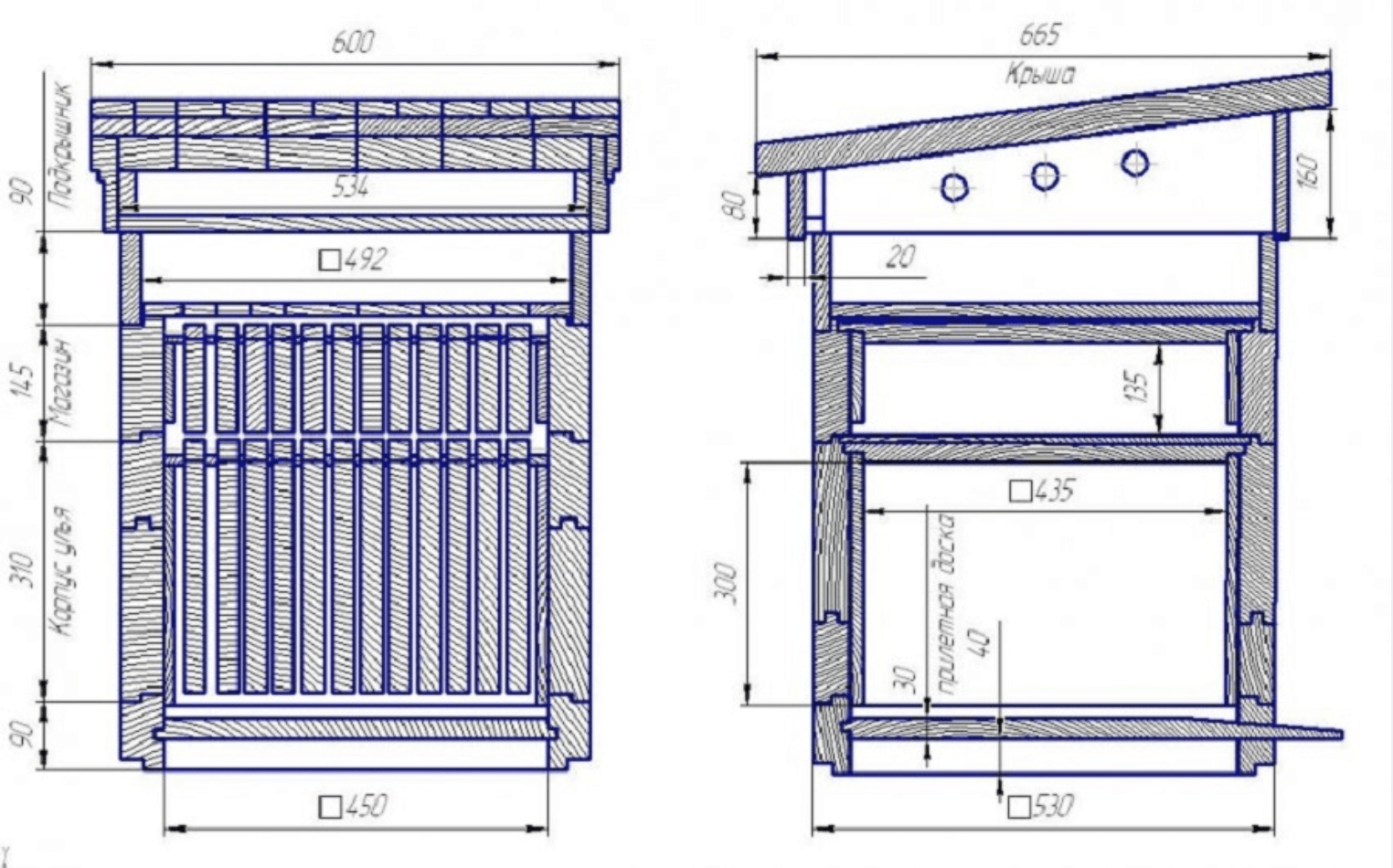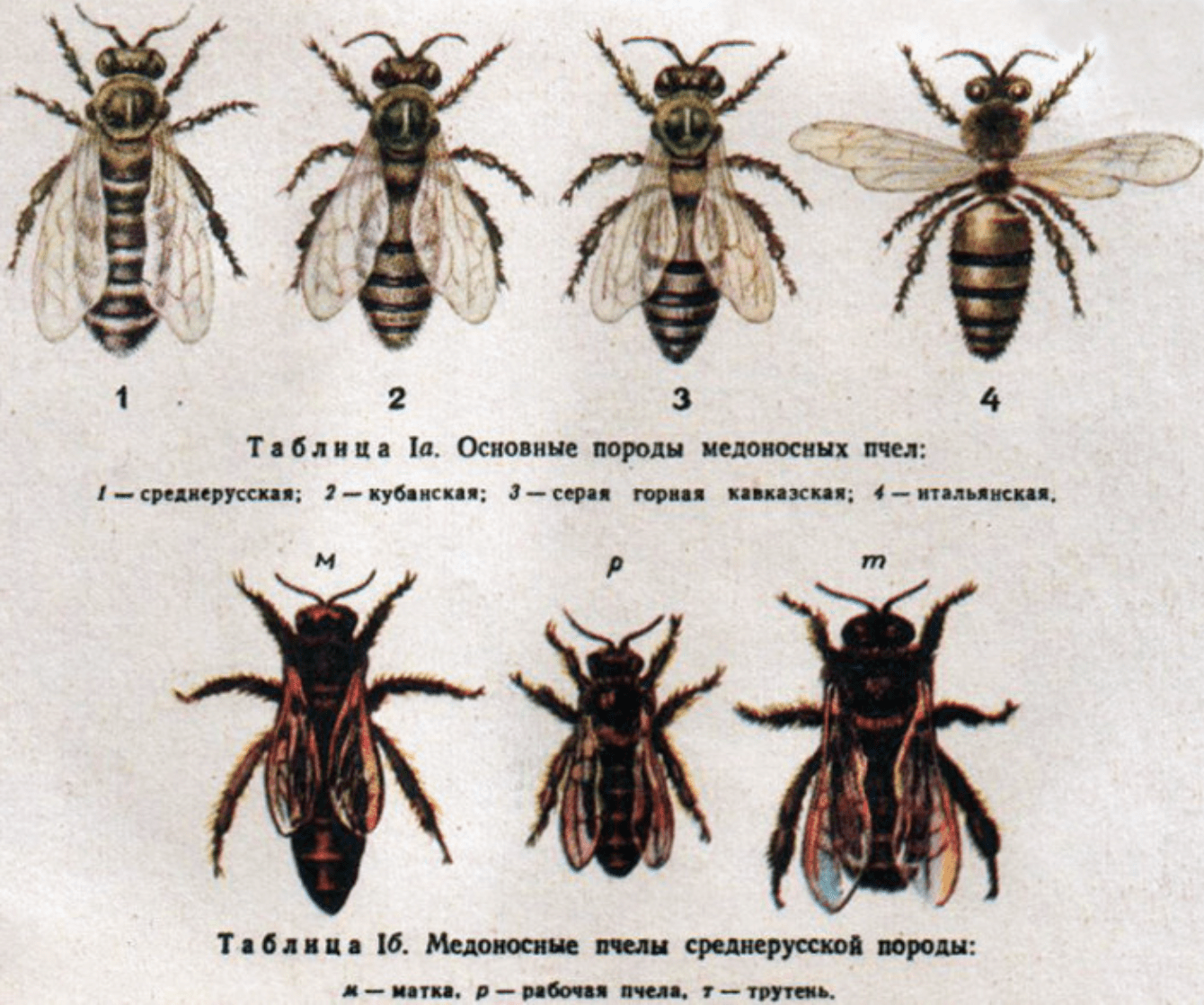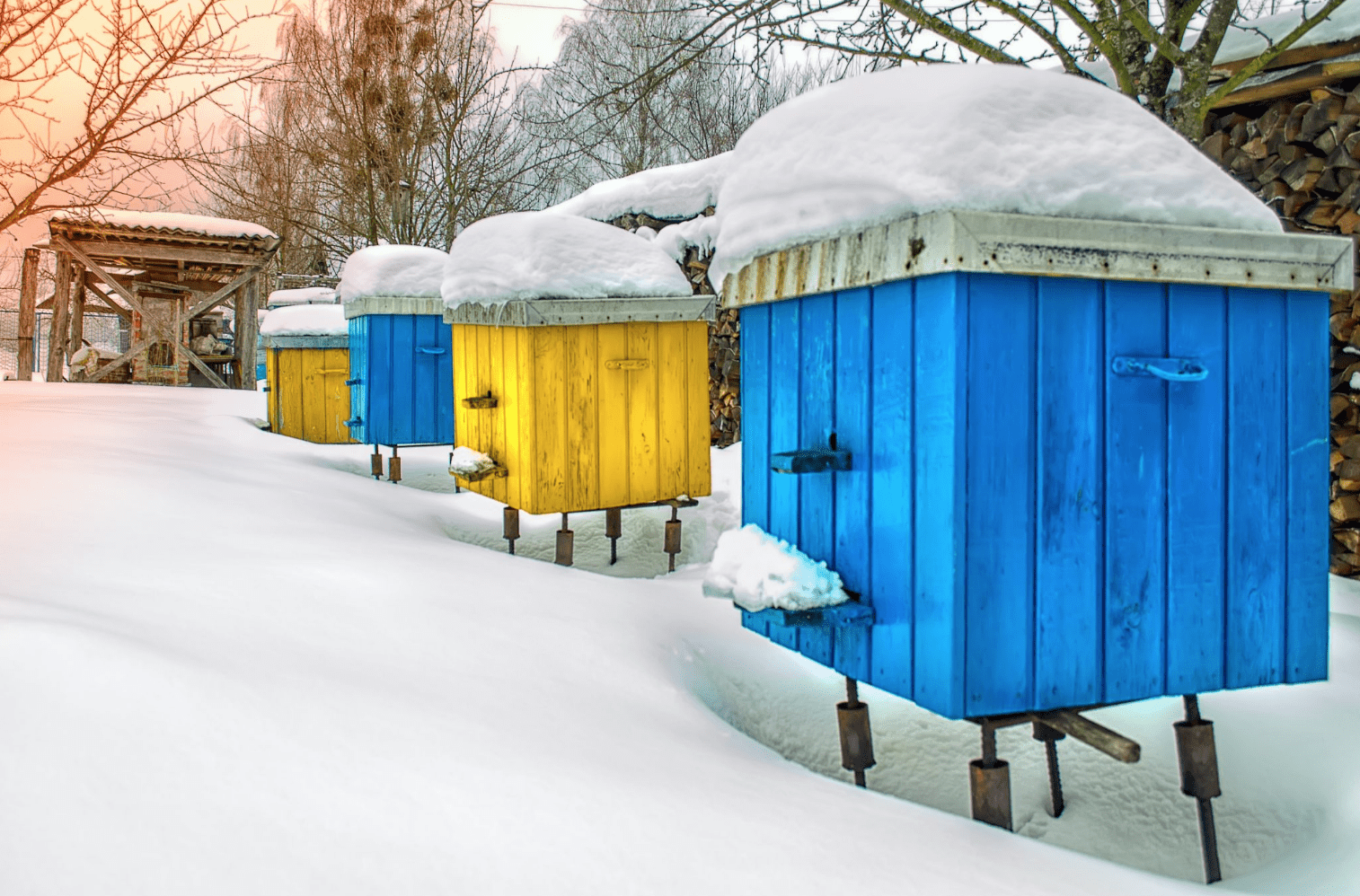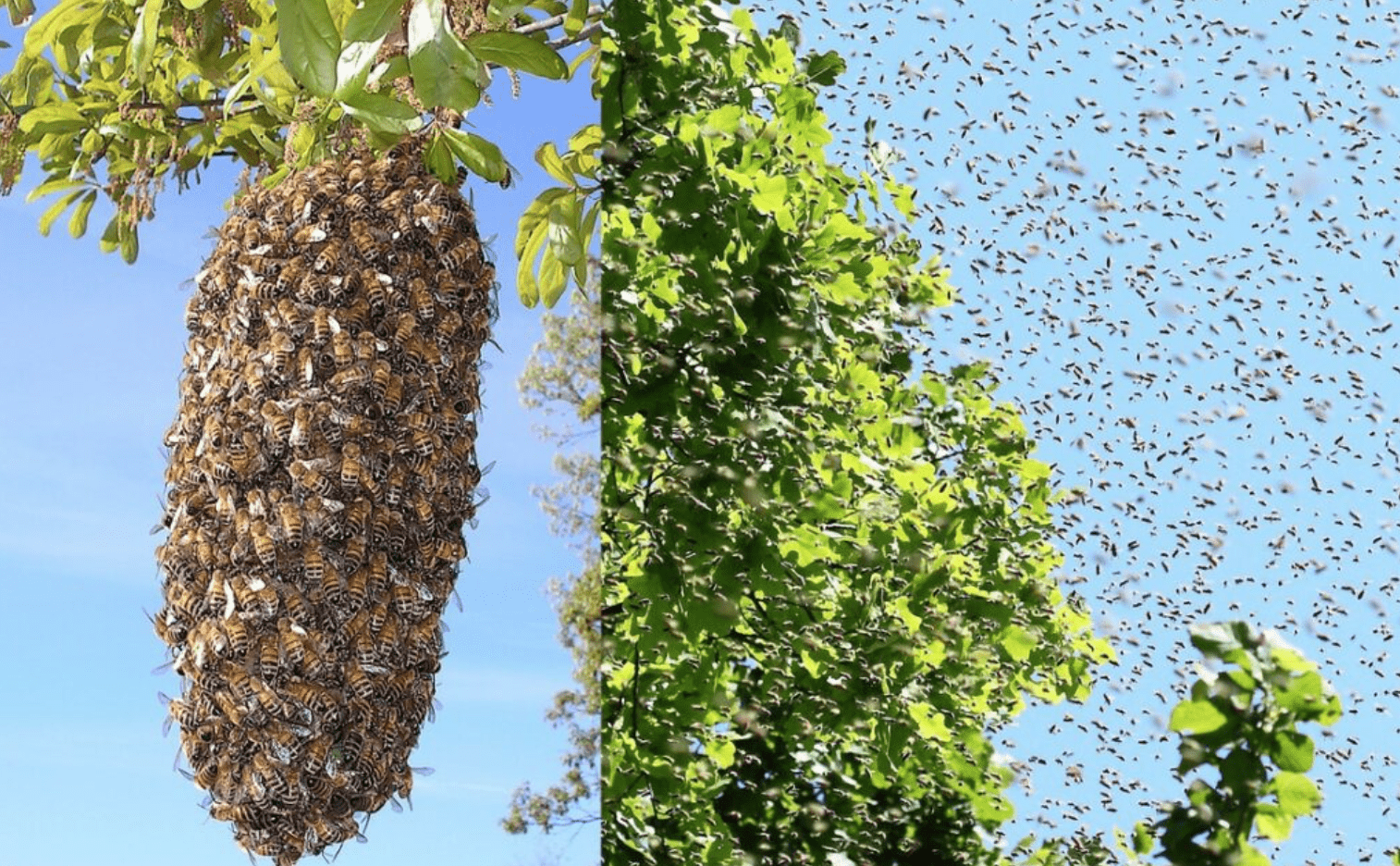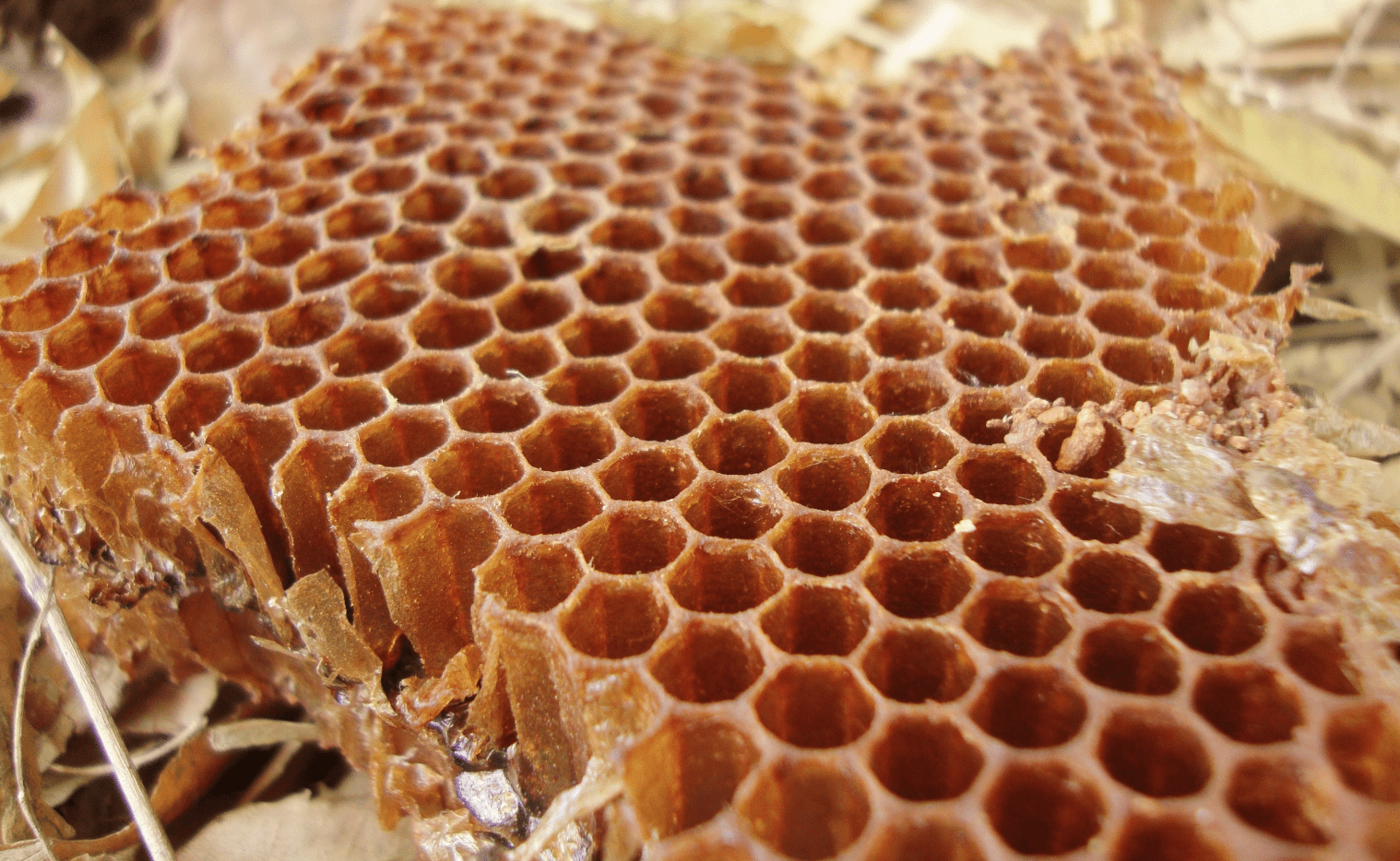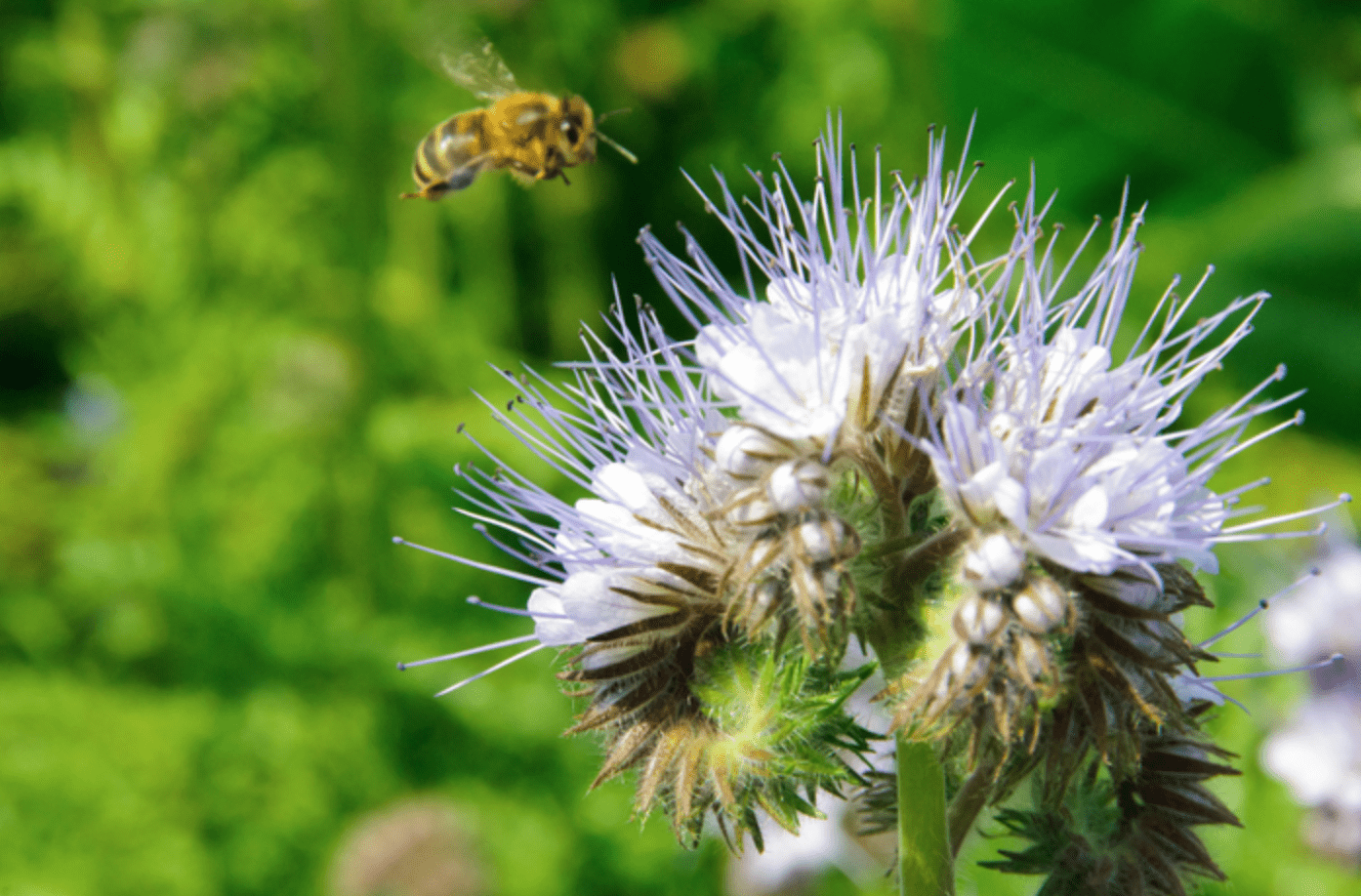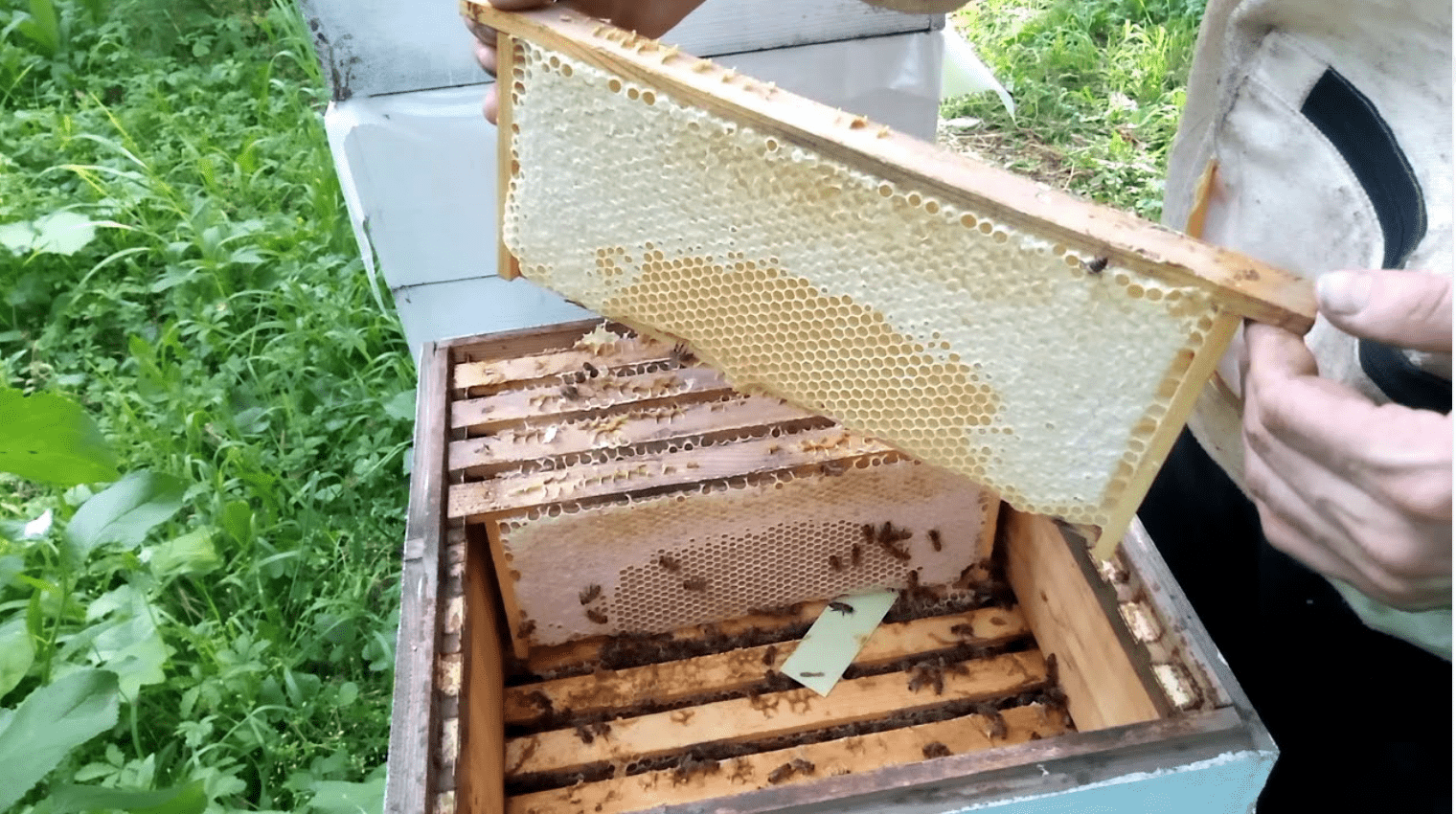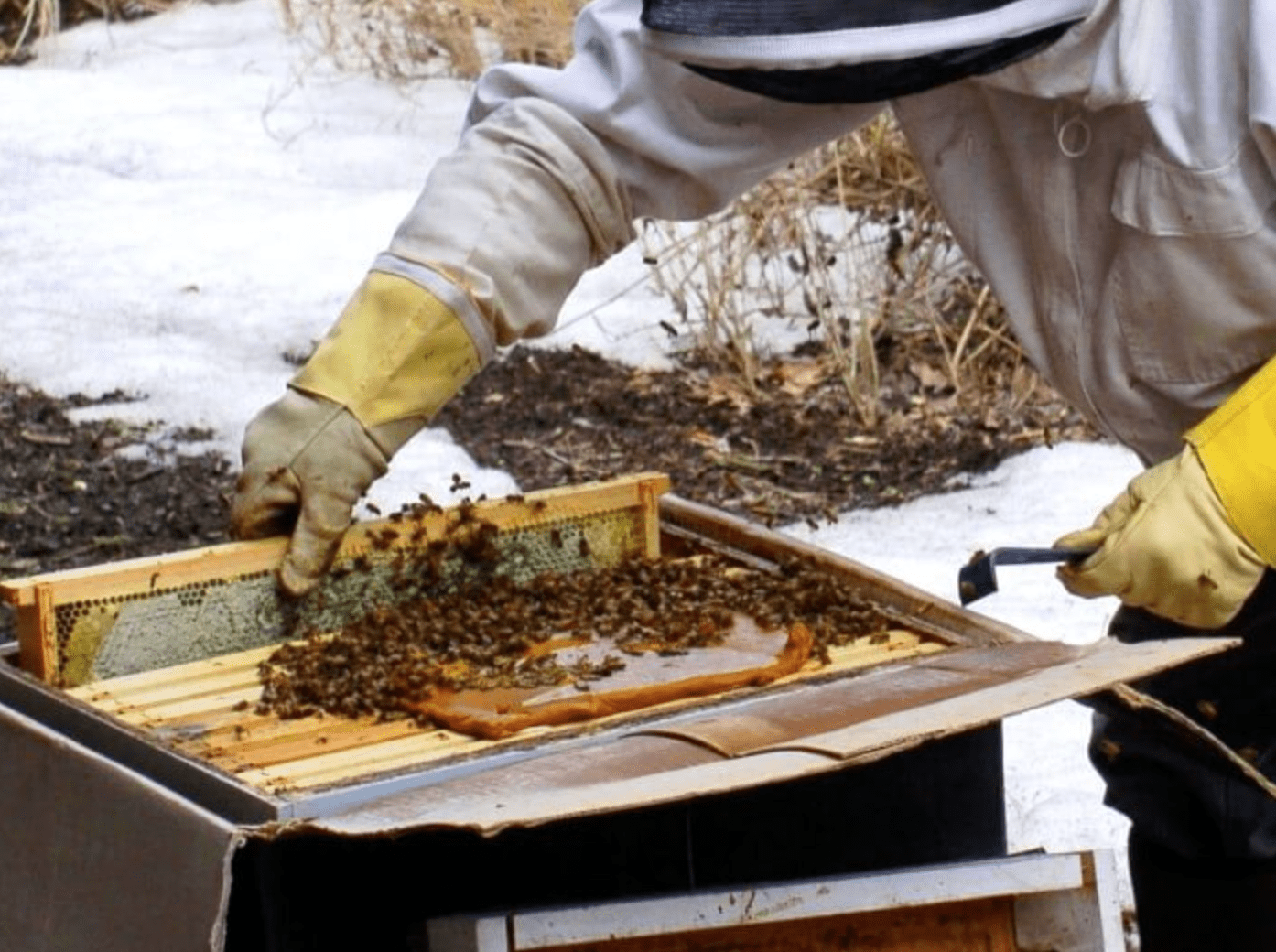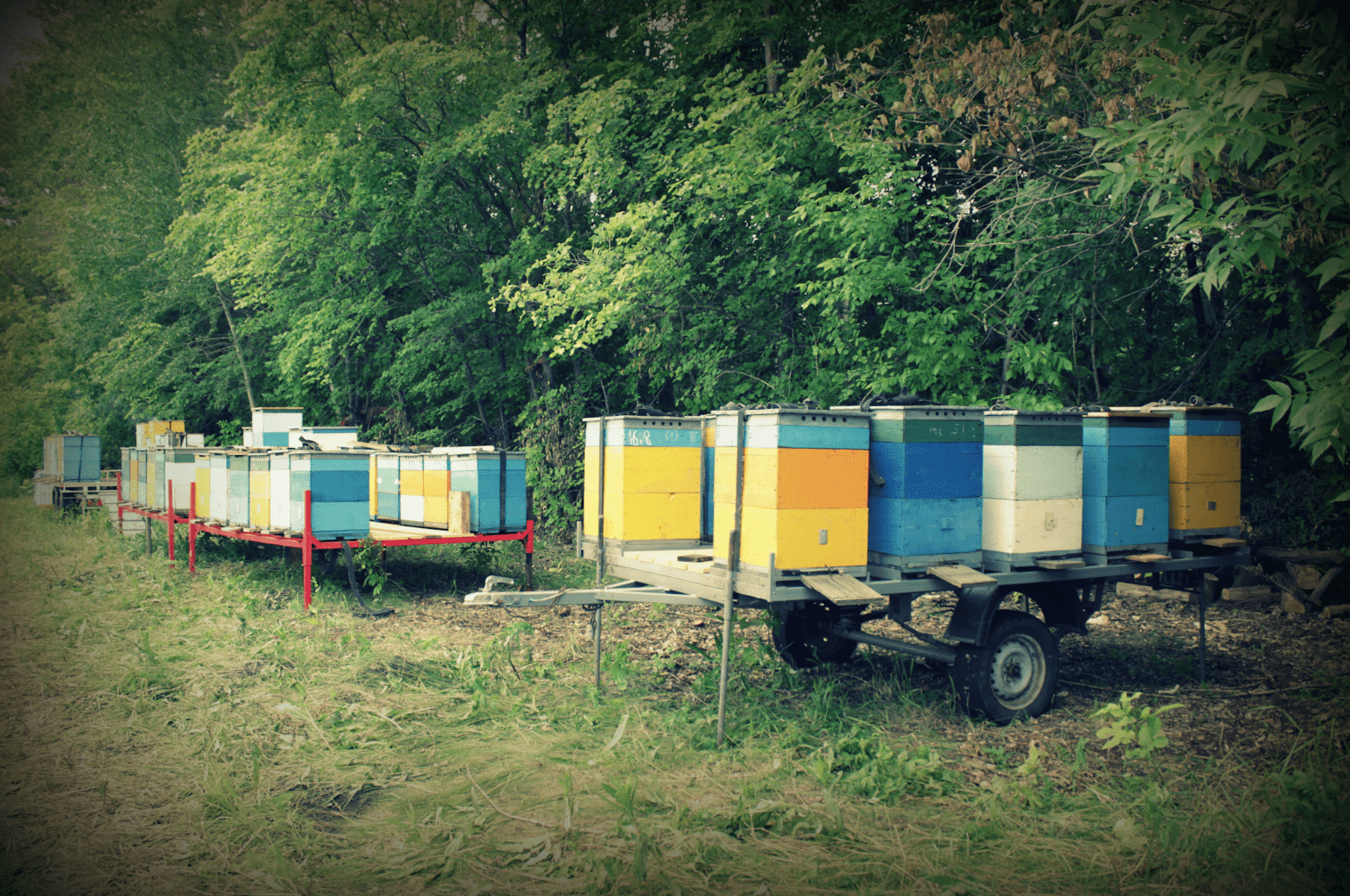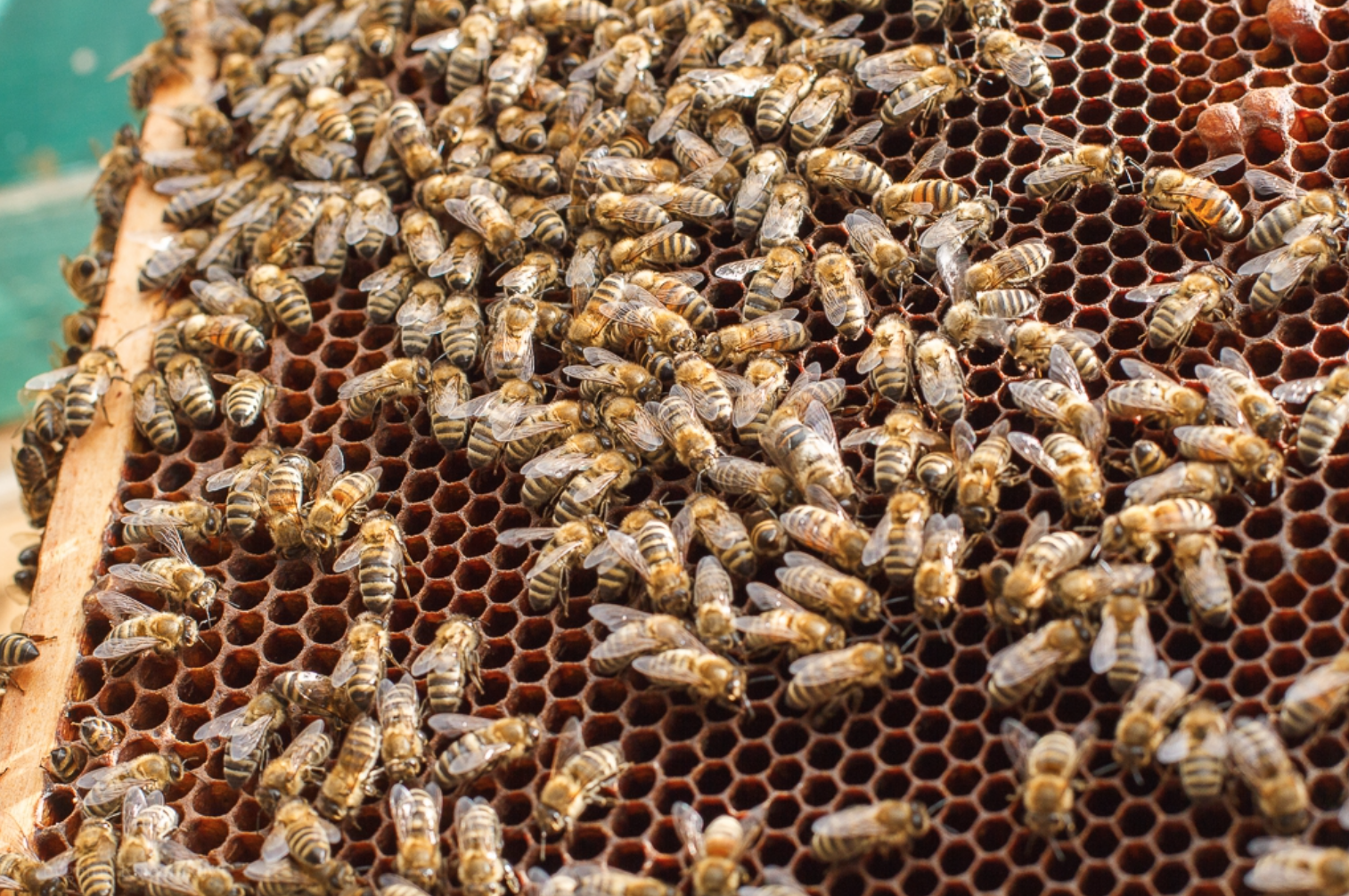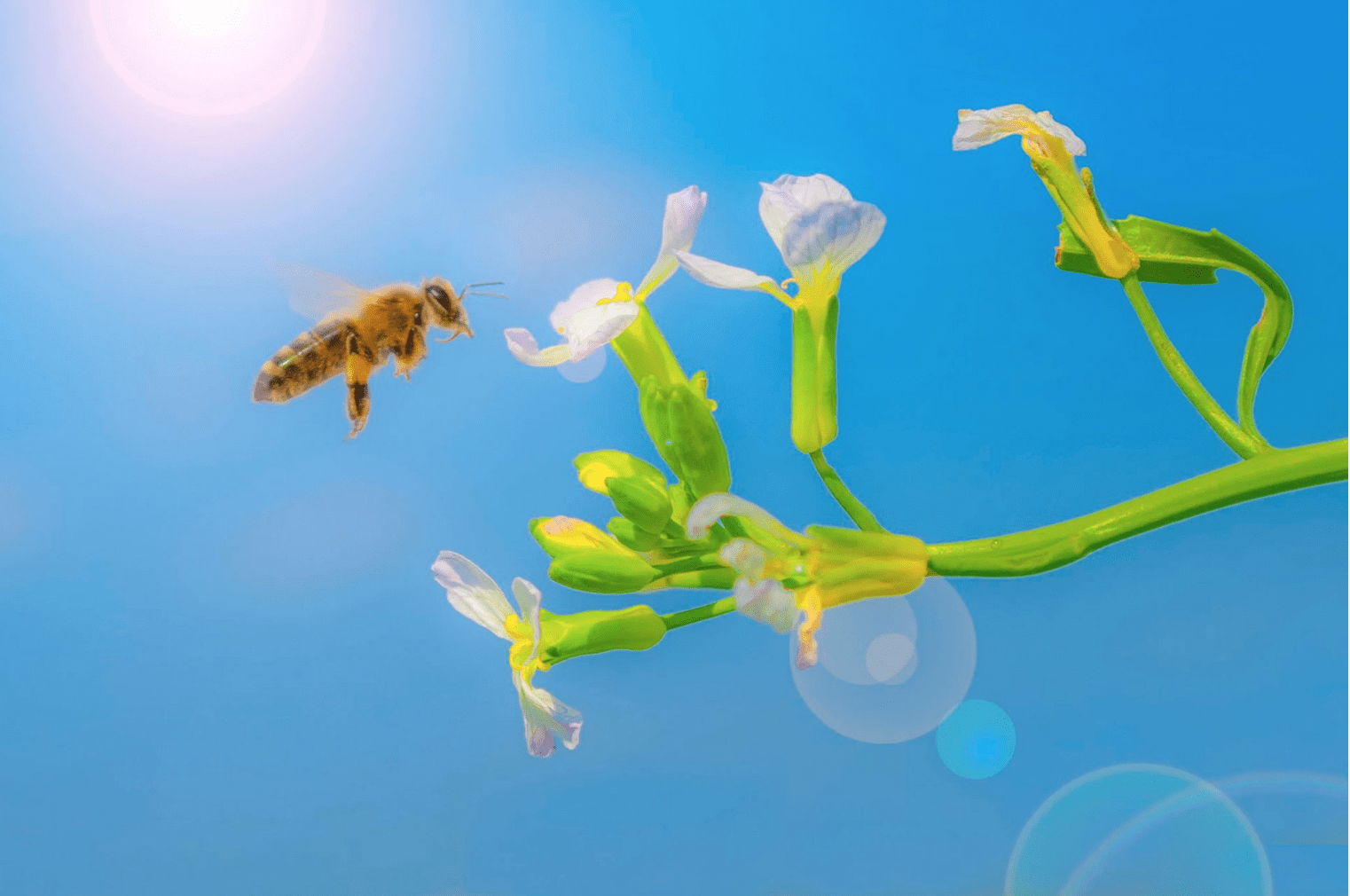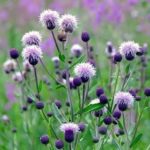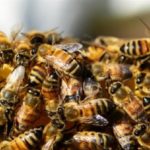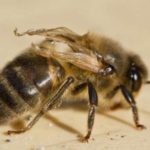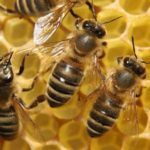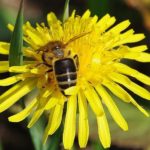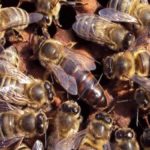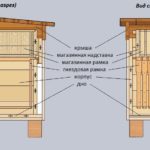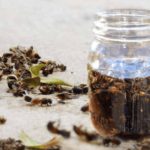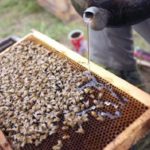Beginning beekeepers are often interested in exactly how much honey can be obtained from one hive per season. Specific parameters are influenced by a number of factors. These include the climatic features of the region, the design of the hive, and the breed of bees. The presence of honey plants nearby is also considered an important parameter. To increase the honey productivity of insects, it is important to provide them with suitable conditions.
- How much honey does one family produce?
- Per season
- In a year
- Factors influencing the amount of honey
- Location
- Hive design
- Bee breed
- Food quality
- Preparing for winter
- Bee swarming
- Spare cells
- Presence of honey plants
- Selection of honey frames
- How to increase hive productivity
- Nomadism
- Strong family
- Preventing insects from overheating
How much honey does one family produce?
The volume of the bribe depends on the size of the beehive and its design features. Free multi-hull hives are considered the most productive. It is also worth considering that the absence of overheating helps maintain the activity of insects, increases their endurance and minimizes the likelihood of swarming.
Per season
The amount of honey that a beekeeper receives from a hive differs depending on the method of maintaining the apiary. In nomadic beekeeping, the apiary is repeatedly moved to places where the plants are at the peak of flowering. Usually this is done 2 to 7 times.
This method of keeping bees is considered quite labor-intensive. It requires financial investments and can cause the death of a family due to changing conditions. However, the nomadic maintenance of an apiary significantly increases the overall productivity of bees during the season.
In good weather conditions, with a minimum risk of swarming and death of insects, 1 hive of a mobile apiary can produce an average of 150 kilograms of honey during the season. Moreover, in the most successful years, this parameter reaches 200 kilograms.
When keeping insects in a stationary apiary, 1 bee colony produces 70-80 kilograms of honey. This volume can be achieved by creating the most comfortable conditions. It is important to adhere to the following rules:
- regularly monitor the condition of bee colonies;
- provide insects with suitable living conditions;
- equip rooms for pumping;
- provide a good honey base.
The record figure that can be obtained is 100 kilograms of honey. It is important to take into account that in such an apiary it is impossible to obtain a monofloral product - buckwheat, sweet clover, linden.
At the same time, many are interested in how much honey can be obtained over the summer. In central Russia, the product is pumped out twice - at the end of June and in the first half of August. Honey collection from one standard hive with 24 half-frames is 15-20 kilograms. This is due to the impossibility of cleaning the honeycombs and the need of insects for food. In a good summer, one hive can produce 30-40 kilograms of honey.
In a year
The amount of honey produced by a bee colony throughout the year is calculated from the moment of the first pumping until the insects are prepared for winter. So, if one family is capable of producing 30-45 kilograms of nectar per season, then the parameters increase several times over the year. They can be 60-80 kilograms. However, the harvest may be less than planned. This is due to the fact that the honeycombs are not completely filled, and it is not possible to take part of the nectar from them.
Factors influencing the amount of honey
The amount of honey depends on many factors. These include the design features of the hive, its location, the breed of bees and much more. This must be taken into account by people who are involved in beekeeping.
Location
To collect a lot of honey, it is important to choose the right location for the apiary. It is worth taking into account the climate characteristics:
- duration of winter;
- temperature indicators during wintering;
- timing of the arrival of spring;
- amount of sun rays;
- distinctive features of the summer period.
For each zone, a specific breed of bees is suitable, which is more adapted to its conditions.The insects most adapted to life in Russia include Carpathian and Caucasian bees. You can also breed Central Russian and Ukrainian breeds. Warm and long summers have a beneficial effect on the amount of honey. In the south, beekeepers are able to collect sweet nectar up to 10 times.
Hive design
The volume of honey depends significantly on the size of the hive and its design features. Free multi-hull houses are considered to be the most productive. They help avoid overheating of insects, which makes them lethargic and weakened. Such bees cannot fly for long.
Experienced beekeepers prefer to use bed hives. They have high and narrow frames. It is usually recommended to take 12 frames and make them into 2 cases. Then you need to construct an extension for 12 frames and add a magazine for 8. In such a hive you can support 2 families that are actively working. This has a beneficial effect on productivity and minimizes the likelihood of swarming.
Bee breed
The amount of honey directly depends on the breed of bees that the beekeeper is breeding. The most productive insects include:
- Central Russian ones bring more than 30 kilograms of honey per season. In good conditions, this parameter reaches 100 kilograms.
- Carpathian - honey collection parameters are at the level of 30-80 kilograms.
- Ukrainian steppe - produce an average of 30-40 kilograms of nectar. In this case, the maximum number reaches 80-100.
- Italian - bring 25-29 kilograms.
- Gray mountain Caucasian - give 28-29 kilograms.
Food quality
If they want to save money or there is a shortage of honey, some beekeepers feed insects with sugar syrup. But in such a situation it will not be possible to get a good result.Insects that eat the syrup can remain in the air for a maximum of 3 hours. In addition, they do not fly more than 500 meters from the hive.
Bees that eat high quality food can fly for more than 3 hours. In addition, they are 2 kilometers away from the apiary. This has a beneficial effect on productivity and helps to get much more honey. In addition, proper feeding helps to double the life expectancy of individuals.
Preparing for winter
In order for the bees to better withstand the winter and be able to prepare for early honeybees, fertilizing is required already in early August. This helps insects build up fat reserves. When preparing food for winter, it is important to remember that the ratio of natural honey and sugar syrup should be 3:2. In this case, the larvae and adults will feed on the natural product. This will have a good effect on the quality and sustainability of bee colonies.
Bee swarming
Beekeepers must constantly monitor the condition of insects to avoid swarming. Experienced beekeepers try to prevent the formation of swarms. To do this, they load the insects with work.
To achieve the required results, beekeepers always take out sealed honeycombs and install empty ones instead. This signals insects about nutritional deficiency and stimulates them to work more productively, distracting them from the reproduction process.
Spare cells
During the height of honey harvest, it is important to have a sufficient number of spare combs. Thanks to this, insects concentrate not on the construction of honeycombs, but on collecting nectar. In addition, the presence of empty honeycombs causes bees to become more active in order to fill them. If there are not enough honeycombs, bees reduce their productivity because they have nowhere to store nectar.
Therefore, experts advise systematically removing filled honeycombs and putting empty ones in their place. When actively collecting nectar, it is even recommended to replace honeycombs that are not completely filled. However, in case of removing incompletely filled honeycombs, it is important to ensure that they are sealed. Otherwise, honey will contain moisture, which will reduce its quality characteristics and shorten its storage period.
It is also worth considering another important feature. Frames with sealed combs are located at the edges of the hive, and frames with brood are concentrated in the central part. Therefore, finding the necessary elements is not difficult.
Presence of honey plants
The presence of honey plants is of great importance for the synthesis and quality characteristics of honey. Bees must collect pollen and nectar from flowers. Therefore, it is best to place the apiary on a forest cannon, on a sown field or in an orchard. The presence of bees has a positive effect on the growth and development of honey crops.
At the same time, among the most productive honey plants are willow, lavender, and dandelions. Clover and alfalfa are also considered excellent plants for producing honey. However, the most popular are linden and buckwheat varieties.
If the required number of honey plants is not available, you can use the transportation method. To do this, the apiary needs to be mounted on a trailer and transported closer to flowering crops.
It is important to take into account the distinctive features of the region. They should not differ significantly from the normal living conditions of bees.In addition, insects may experience stress during transportation, which also negatively affects their productivity.
Selection of honey frames
Experienced beekeepers know that collecting honeycombs during the daytime is prohibited. This is due to the cessation of nectar collection by insects. They begin to restore order in the hive and adapt to new conditions.
It is best to remove honey frames in the evening. If there is a covered pavilion with electricity, this can be done at night. At the same time, the insects will be sleepy and calm. Thanks to this, you can get a good look at the hive, clean and replace the honeycombs.
It is important to take into account that the sealed honeycombs are located along the edges of the hive, and the cells with brood are concentrated in the central part. Therefore, there is no need to rummage through the entire contents of the bee’s home. Insects will be able to restore order by morning, adapt to new conditions and begin honey collection again.
How to increase hive productivity
Beekeepers always strive to increase insect productivity. This makes their business more profitable. That being said, there are many effective methods for increasing the amount of honey. To do this, it is recommended to adhere to the following rules:
- saturate the bees' food with vitamin supplements;
- use efficient hive designs;
- cull brood larvae;
- use electric heaters;
- install nets for collecting waste;
- feed insects with flower syrup;
- install upper tapholes.
Nomadism
To make honey, bees must have access to pollen, nectar and the sticky substance that covers the young leaves and stems of certain crops. All these substances can be obtained only during the flowering period of plants. Typically this period lasts for a limited period of time.As a rule, it does not exceed 1 month. Therefore, the period of active honey collection is short.
Using the migration method following honey plants that bloom at different periods of time helps to increase honey collection parameters several times. Moreover, this result can be achieved without the use of other methods of increasing insect productivity.
At the same time, enterprising beekeepers have long been able to find a simple and effective method that helps to significantly increase the period of collecting nectar and pollen, extending it throughout the summer. To do this, they create a nomadic apiary, or a farm on wheels. At the same time, it is important to properly organize the movement, since not all breeds tolerate transportation well. When creating a nomadic apiary, the following must be taken into account:
- It is important to properly secure the hives inside the vehicle to prevent the insects from being injured or stressed.
- Traveling significant distances can result in the bees not finding their way back. The optimal distance usually does not exceed 2-3 kilometers.
- At each new site, bees should easily find water. It could be a lake, river, stream.
- The movement of bees may require a number of permits or other supporting documents. Otherwise, government agencies may confiscate the cargo.
Strong family
An important method of increasing the productivity of a hive is the implementation of labor-intensive breeding work. Its goal is to obtain a strong bee colony with a maximum of working individuals. The productivity of insects is affected not only by their health and the state of the immune system, but also by the general comfort in the home.
Therefore, to increase the productivity of bee colonies, it is necessary to organize a spacious hive and provide its inhabitants with plenty of space for storing honey and brood. Another advantage of having free space in the hive is that there is no risk of insects overheating due to close contact.
Preventing insects from overheating
There are many studies that show that there is a direct connection between the air temperature in the hive and the honey production of bees. So, during honey collection, insects feel comfortable if the air temperature in the hive is no more than +35-35.5 degrees. At the same time, outdoor readings should be +22-28 degrees.
It is worth noting that insects are able to withstand significantly higher parameters. However, for this they need to take special measures - to provide special ventilation in the hive. To do this, working individuals actively flap their wings.
Thus, in case of overheating, most insects are distracted from performing their main task and are engaged in other activities that require a lot of energy expenditure. In addition, individuals that are not involved in cooling the home become more sleepy and lethargic. As a result, the productivity of insects is significantly reduced. Therefore, hives should not be placed in an open area where there is no natural protection from direct sunlight.
The dimensions and design features of the hives are also of great importance. In order for insects to bring the maximum amount of honey, they need to be provided with comfortable conditions.

